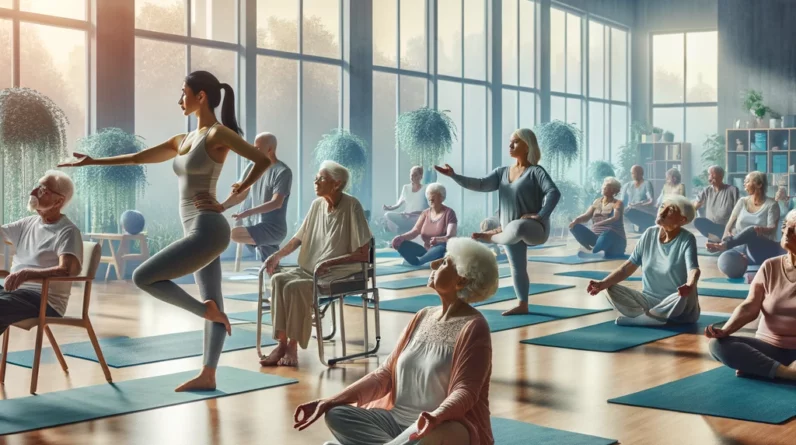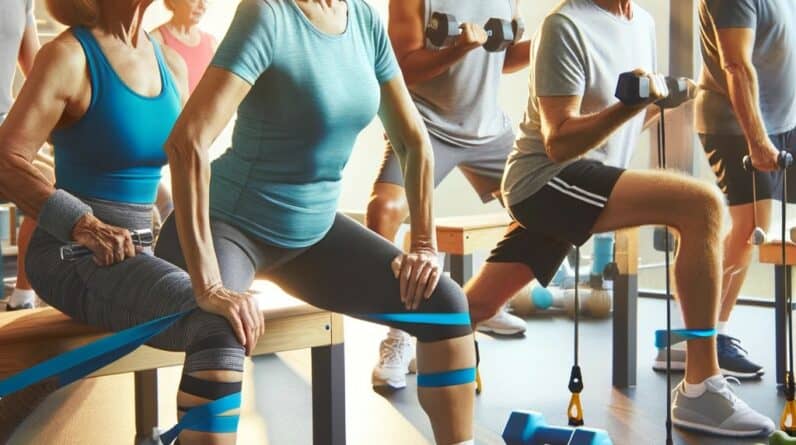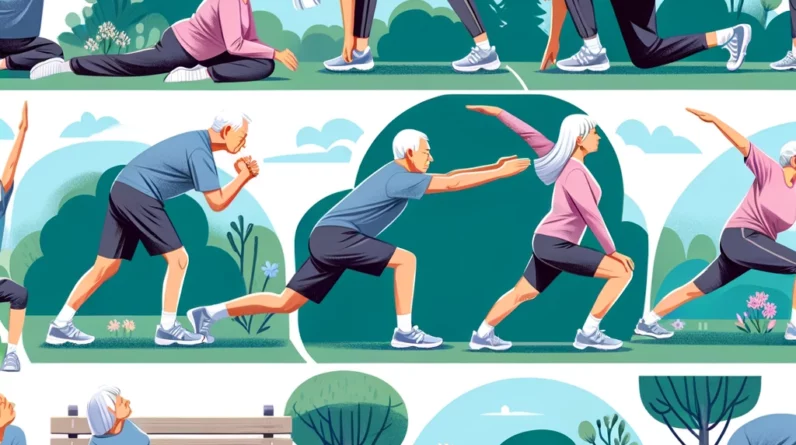Introduction
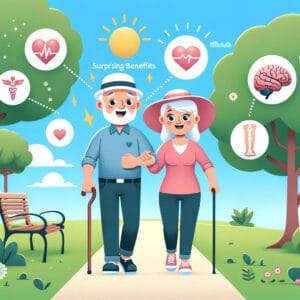

Dementia Discovery That is Leaving Doctors Speechless (Try This Tonight)
Better than Morphine For Joint Pain… Yet Safer Than Aspirin?
Retire With Freedom. Start Earning Extra Cash Today.
Welcome to our blog, where we provide valuable information and tips for individuals over 50 who prioritize their health and well-being.
In this article, we will delve into the benefits of walking for seniors. As we age, maintaining an active lifestyle becomes increasingly important, and walking offers a simple yet powerful way to promote physical, mental, and emotional wellness.
Let’s explore the numerous reasons why walking is a fantastic choice for seniors looking to enhance their overall health and vitality.
1. Why Walking is Beneficial for Seniors
Physical Benefits of Walking for Seniors
Walking is a low-impact exercise that provides a range of physical benefits for seniors. It is a simple and accessible form of physical activity that can be easily incorporated into daily routines. In addition to being enjoyable, walking has numerous health benefits for seniors, including:
- Improved cardiovascular health: Walking is a great way to improve heart health and reduce the risk of heart disease. It helps to lower blood pressure, improve circulation, and strengthen the heart muscle.
- Reduced risk of chronic diseases: Regular walking can help seniors maintain a healthy weight, which in turn reduces the risk of chronic diseases such as diabetes, heart disease, and stroke. It also helps to improve overall health and well-being.
- Enhanced balance and coordination: As we age, our balance and coordination can decline, making us more prone to falls and injuries. Walking regularly can help to improve balance and coordination, reducing the risk of falls and related injuries.
In addition to these benefits, walking can also have a positive impact on other aspects of physical health, such as muscle strength and flexibility. It is a weight-bearing exercise, which means it helps to strengthen bones and muscles, reducing the risk of osteoporosis and improving overall physical function.
It is recommended that seniors aim for at least 30 minutes of moderate-intensity walking, five days a week. This can be broken up into smaller increments throughout the day, making it easier to fit into busy schedules.
Here are some tips to help seniors get the most out of their walking routine:
- Start slow and gradually increase intensity and duration to avoid injury.
- Wear comfortable and supportive shoes to reduce the risk of foot and joint pain.
- Choose a safe and flat walking surface, such as a park or track.
- Use walking aids, such as a cane or walker, if needed for balance and stability.
- Stay hydrated by drinking water before, during, and after walking.
By incorporating regular walking into their routine, seniors can experience numerous physical benefits that can improve their overall health and well-being. It is a simple and enjoyable form of exercise that can be easily adapted to individual needs and abilities. So put on your walking shoes and start reaping the benefits today!
Mental and Emotional Benefits of Walking for Seniors
Beyond physical benefits, walking also contributes to the mental and emotional well-being of seniors. It can help alleviate stress, anxiety, and depression while promoting a sense of happiness and overall well-being. Additionally, walking provides an opportunity for seniors to enjoy nature, socialize with others, and engage in a fulfilling and enjoyable activity, thereby enhancing their quality of life.
Walking has been shown to reduce stress and anxiety levels in seniors. This is because physical activity releases endorphins, which are natural mood-boosting chemicals in the brain. Regular walking can help seniors manage stress and anxiety, leading to a more relaxed and positive outlook on life.
Walking has been linked to improved cognitive function in seniors. This is because walking increases blood flow to the brain, delivering oxygen and nutrients that are essential for brain health. Regular walking can help seniors maintain their cognitive abilities and reduce the risk of cognitive decline.
Walking can have a positive impact on seniors’ mood and overall well-being. It provides a sense of accomplishment and can boost self-esteem. Additionally, walking in nature can have a calming effect and improve overall mental health.
Moreover, walking can also have social benefits for seniors. It provides an opportunity to socialize with others, whether it’s walking with a friend or joining a walking group. This can help combat feelings of loneliness and isolation, which are common among seniors.
Furthermore, walking can also serve as a form of therapy for seniors. It allows them to clear their minds, reflect on their thoughts and feelings, and find inner peace. This can be especially beneficial for seniors who may be dealing with grief, loss, or other emotional challenges.
Incorporating walking into a senior’s daily routine can also have a positive impact on their sleep. Regular physical activity, such as walking, can improve sleep quality and help seniors fall asleep faster and stay asleep longer.
It’s important to note that walking should not be seen as a cure for mental health issues. However, it can be a helpful tool in managing and improving mental and emotional well-being in seniors.
In conclusion, walking offers numerous mental and emotional benefits for seniors. It can help reduce stress and anxiety, improve cognitive function, enhance mood and overall well-being, and provide social and therapeutic benefits. Incorporating regular walks into a senior’s routine can have a positive impact on their mental and emotional health, leading to a happier and more fulfilling life.
2. How Walking Improves Senior Health
Impact on Joint Health and Mobility
Walking is a simple yet effective way for seniors to maintain and improve their joint health and mobility. As we age, our joints can become stiff and painful, making it difficult to move around and perform daily tasks. Regular walking can help alleviate these issues and provide numerous benefits for seniors.
One of the main benefits of walking for seniors is its ability to reduce joint pain and stiffness. As we walk, our joints move and flex, which helps to lubricate them and keep them functioning properly. This can provide relief for seniors who suffer from conditions such as arthritis or joint inflammation.
In addition, walking can also help to strengthen the muscles around the joints, providing more support and stability. This can help reduce the pressure on the joints and alleviate pain and discomfort.
Regular walking can also help seniors maintain and improve their flexibility and range of motion. As we age, our joints can become less flexible, making it difficult to perform certain movements. Walking helps to keep the joints moving and can prevent them from becoming stiff and immobile.
Moreover, walking can also help to improve balance and coordination, which can be beneficial for seniors who may be at risk of falls or accidents due to decreased mobility.
- Walking helps to lubricate and strengthen the joints
- Reduces stiffness and maintains flexibility
- Provides relief for conditions such as arthritis and joint inflammation
- Strengthens muscles around the joints for more support and stability
- Improves flexibility and range of motion
- Prevents joints from becoming stiff and immobile
- Improves balance and coordination
- Reduces risk of falls and accidents
Incorporating regular walking into their routine can have a significant impact on the joint health and mobility of seniors. It is a low-impact form of exercise that can be easily modified to suit individual needs and abilities. Remember to always consult with a doctor before starting any new exercise routine, especially if you have any pre-existing joint conditions or injuries.
Next, we will explore how walking can also benefit bone health and help prevent osteoporosis in seniors.
Bone Health and Osteoporosis Prevention
As we age, our bones naturally become weaker and more prone to fractures. This is especially true for seniors, who may already have underlying health conditions that affect their bone health. However, regular walking can help prevent osteoporosis and maintain strong bones in seniors.
Walking is a weight-bearing activity, which means that it requires your bones to support your body weight. This stimulation of the bones helps to promote bone growth and maintain bone density. As a result, walking can help to prevent osteoporosis and reduce the risk of fractures in seniors.
One of the key benefits of walking for seniors is the increase in bone density. As we age, our bones naturally become less dense, making them more fragile and prone to fractures. However, regular walking can help to maintain and even increase bone density, making bones stronger and less susceptible to injury.
In fact, a study published in the Journal of Bone and Mineral Research found that women who walked for at least four hours a week had a 41% lower risk of hip fractures compared to those who walked for less than an hour a week.
Walking not only helps to increase bone density, but it also improves overall bone strength. This can significantly reduce the risk of fractures in seniors, especially in areas such as the hips, spine, and wrists, which are most commonly affected by osteoporosis.
In addition, walking can also improve balance and coordination, which can help prevent falls and further reduce the risk of fractures.
- Walking is a weight-bearing activity that stimulates bone growth.
- Regular walking can help to maintain and increase bone density.
- Women who walk for at least four hours a week have a 41% lower risk of hip fractures.
- Walking improves overall bone strength, reducing the risk of fractures.
- Walking can also improve balance and coordination, preventing falls and further reducing the risk of fractures.
3. The Benefits of Walking for Seniors – The Social Aspect of Walking for Seniors
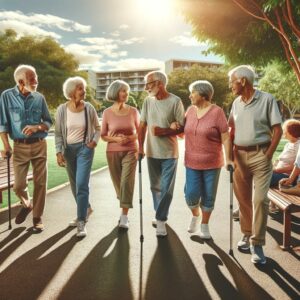
Community Engagement and Social Connections
Walking is not just a physical activity for seniors, it also provides an opportunity for community engagement and social connections. This is especially important for seniors who may be at risk of isolation and loneliness. By joining walking groups, strolling with friends, or participating in organized walks, seniors can form valuable social connections and enjoy the company of like-minded individuals. This social interaction contributes to a sense of belonging and overall happiness for seniors.
Let’s take a closer look at how walking can enhance community engagement and social connections for seniors:
Opportunities for socializing and making new friends
- Walking groups provide a great opportunity for seniors to meet new people and make new friends. These groups often have a diverse range of members, allowing seniors to interact with people from different backgrounds and cultures.
- Walking with friends or family members also allows seniors to catch up and spend quality time together. This can be especially beneficial for those who may not have regular social interactions.
- Participating in organized walks, such as charity walks or community events, can also be a great way for seniors to meet new people and engage with their local community.
Enhanced sense of community
- Walking in groups or with friends can create a sense of camaraderie and belonging. Seniors may feel more connected to their community and have a sense of purpose when they are part of a walking group.
- Walking in familiar neighborhoods or parks can also help seniors feel more connected to their surroundings and the people in their community.
- Participating in community events or charity walks can also give seniors a sense of pride and accomplishment, as they are contributing to a greater cause and making a positive impact in their community.
Overall, walking provides seniors with opportunities to engage with others and form meaningful social connections. This can have a positive impact on their mental and emotional well-being, as well as their overall quality of life.
Next, we will explore how walking can also stimulate the mind and provide cognitive engagement for seniors.
Mental Stimulation and Cognitive Engagement
Mental Stimulation and Cognitive Engagement
Engaging in regular walks stimulates mental sharpness and cognitive engagement for seniors. It offers a chance to explore new surroundings, engage in meaningful conversations, and remain mentally active, all of which are beneficial for cognitive function and overall brain health in older adults.
Walking is not just a physical activity, but it also has numerous benefits for mental stimulation and cognitive engagement in seniors. Here are some ways in which walking can enhance cognitive function and keep the brain active:
- Stimulating Conversations and Interactions: Walking in groups or with a walking partner provides opportunities for seniors to engage in stimulating conversations and interactions. This can help keep the brain active and improve cognitive function. Seniors can discuss a variety of topics while walking, such as current events, personal experiences, or even just sharing stories and memories. These conversations can help stimulate the brain and keep it engaged.
- Mental Engagement While Walking in Groups: Walking in groups also allows seniors to engage in mental activities while walking. For example, they can play games like “I Spy” or “20 Questions” to keep their minds active. They can also discuss and solve puzzles or riddles together, which can help improve cognitive function and keep the brain sharp.
- Exploring New Surroundings: Walking in different environments, such as parks, trails, or new neighborhoods, can provide new and stimulating surroundings for seniors. This can help keep their minds engaged and prevent boredom. Exploring new surroundings can also stimulate the brain and improve cognitive function.
- Meaningful Conversations: Walking with a friend or in a group can also provide opportunities for seniors to have meaningful conversations. This can include discussing their interests, hobbies, or even just sharing life experiences. Meaningful conversations can help keep the brain active and improve cognitive function.
In addition to these benefits, walking can also help seniors maintain their social connections and sense of community, which can have a positive impact on their mental well-being. By engaging in regular walks, seniors can stay mentally sharp and cognitively engaged, while also enjoying the social aspect of walking with others.
4. Tips for Safe and Enjoyable Senior Walking
Choosing the Right Footwear
When it comes to walking, choosing the right footwear is crucial for seniors. Not only does it provide support and comfort, but it also helps prevent discomfort and injury during walks. Here are some tips for selecting the perfect walking shoes:
- Supportive and comfortable walking shoes: Look for shoes that provide ample support for your feet. This includes good arch support and cushioning to absorb shock and reduce strain on your joints.
- Appropriate fit and cushioning: Make sure the shoes fit properly and have enough cushioning to provide comfort and prevent blisters. Avoid shoes that are too tight or too loose, as they can cause discomfort and increase the risk of falls.
It is also important to consider any foot conditions or injuries you may have when choosing walking shoes. For example, if you have flat feet, look for shoes with extra arch support. If you have arthritis, look for shoes with extra cushioning to reduce impact on your joints.
Additionally, it is recommended to replace your walking shoes every 300-500 miles or every 6-12 months, depending on how often you walk. This will ensure that your shoes continue to provide adequate support and cushioning.
Here are some other factors to keep in mind when selecting walking shoes:
- Choose shoes with a low heel and a wide toe box for stability and comfort.
- Consider shoes with a non-slip sole for added grip and safety.
- Try on shoes at the end of the day when your feet are at their largest.
- Wear the same type of socks you would wear when walking.
Remember, the right walking shoes can make all the difference in your walking experience. Take the time to find the perfect pair for your needs.
Safety Precautions and Walking Techniques
Seniors should prioritize safety by adhering to specific walking techniques and precautions. Utilizing walking aids as needed, understanding proper posture, and being mindful of their surroundings are important aspects to consider in order to ensure a safe and enjoyable walking experience.
Here are some additional tips and information to help seniors stay safe while walking:
- Use walking aids if necessary: For seniors who may have difficulty with balance or mobility, using a walking aid such as a cane or walker can provide extra support and stability. It is important to choose the right walking aid for your specific needs and to use it correctly.
- Practice proper posture and walking technique: Maintaining good posture while walking can help prevent strain on the body and reduce the risk of falls. Keep your head up, shoulders back, and arms relaxed at your sides. Take small, controlled steps and avoid shuffling or dragging your feet.
- Be mindful of your surroundings: When walking, it is important to pay attention to your surroundings and be aware of any potential hazards. This includes uneven surfaces, obstacles, and other people. Avoid distractions such as using your phone while walking.
- Wear appropriate footwear: Choosing the right footwear is crucial for a safe and comfortable walking experience. Look for shoes that provide good support and cushioning, and make sure they fit properly. Avoid shoes with high heels or slick soles.
- Consider the weather and prepare accordingly: When planning a walk, it is important to consider the weather and dress appropriately. In hot weather, wear light, breathable clothing and bring water to stay hydrated. In cold weather, dress in layers and wear appropriate footwear to prevent slipping on ice or snow.
- Stay hydrated and protect yourself from the sun: It is important to stay hydrated while walking, especially in hot weather. Bring a water bottle with you and take sips regularly. Additionally, protect yourself from the sun by wearing a hat, sunglasses, and sunscreen.
By following these safety precautions and walking techniques, seniors can enjoy a safe and enjoyable walking experience. Remember to listen to your body and take breaks as needed, and always consult with a doctor before starting a new exercise routine.
Weather Considerations and Preparation
Weather Considerations and Preparation
When it comes to outdoor walks, weather conditions play a crucial role in ensuring a safe and enjoyable experience for seniors. It is important to be prepared for any type of weather, whether it be hot and sunny or cold and rainy. Here are some tips to help seniors prepare for different weather conditions:
- Dressing Appropriately: The first step in preparing for outdoor walks is to dress appropriately for the weather. In hot weather, seniors should wear lightweight, breathable clothing that will keep them cool and comfortable. This can include loose-fitting shirts, shorts, and a hat to protect from the sun. In cold weather, it is important to dress in layers to stay warm. This can include a base layer, a mid-layer, and a waterproof outer layer to protect from wind and rain.
- Staying Hydrated: Seniors should always bring a water bottle with them on walks, especially in hot weather. It is important to stay hydrated to prevent dehydration and heat exhaustion. Sipping on water throughout the walk is recommended, rather than waiting until feeling thirsty.
- Protecting from the Sun: When walking in hot weather, it is important to protect the skin from the sun’s harmful rays. This can be done by wearing sunscreen with at least SPF 30 and reapplying every two hours. Wearing a hat and sunglasses can also provide additional protection.
- Being Prepared for Rain: In case of rain, seniors should bring a waterproof jacket or umbrella to stay dry. It is also important to wear appropriate footwear that will not slip on wet surfaces.
Aside from dressing appropriately, there are other precautions that seniors should take when walking in extreme temperatures or adverse weather conditions:
- Using Walking Aids: If necessary, seniors should use walking aids such as a cane or walker to provide extra support and stability. This can be especially helpful when walking on uneven terrain or in slippery conditions.
- Proper Posture and Walking Technique: Maintaining good posture and using proper walking technique can help prevent injuries and make the walk more comfortable. Seniors should keep their head up, shoulders back, and take small steps to maintain balance and reduce strain on the body.
By following these tips, seniors can ensure a safe and enjoyable walking experience, no matter the weather. It is important to always be prepared and make adjustments as needed to stay comfortable and avoid any potential risks. Remember to consult with a doctor before starting any new exercise routine, and always listen to your body’s needs.
Conclusion
As we conclude this exploration of the benefits of walking for seniors, it becomes abundantly clear that walking offers a wealth of advantages for individuals in their golden years. From physical and mental health benefits to the social and emotional rewards, walking serves as an invaluable tool for senior wellness.
By incorporating regular walking into their routines and following the provided tips, seniors can embrace the joys of walking while reaping the myriad benefits it has to offer. Stay tuned for more insightful articles tailored to your well-being and enriched living.
Disclaimer: The information in this article is intended for educational and entertainment purposes only and should not be used instead of or contrary to that of a medical professional.
Before taking supplements, starting a new diet, or embarking on a new exercise regime please consult a medical or nutritional professional.
The owners of “Getting Healthy After 50” are not medical professionals and are simply redistributing information that is freely available on the internet.




